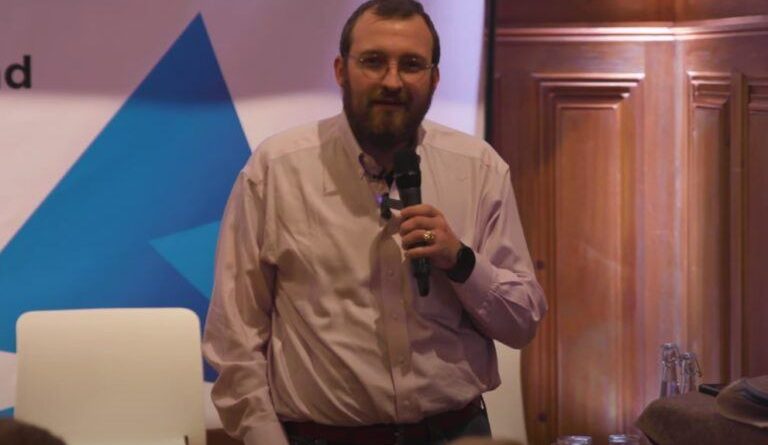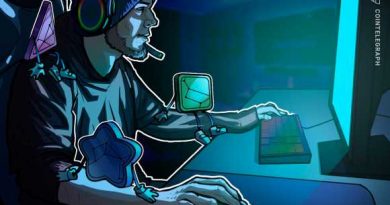$ADA: IOG CEO Charles Hoskinson Explains Essential Value Proposition of Cardano
On Tuesday (August 2), Charles Hoskinson, Co-Founder and CEO of Input Output Global (“IOG”), the company responsible for Cardano’s research and development, found a great way to explain the main goal of the Cardano platform.
When asked by Alex Hammer, the host of “The Future of Technology Podcast” to explain the “essential value proposition” of Cardano in one sentence, the IOG CEO replied:
This is how the Cardano.org website explains the purpose of Cardano:
“Cardano is a fork in the road. It takes us from where we’ve been to where we’re destined to go: a global society that is secure, transparent, and fair, and which serves the many as well as the few. Like the technological revolutions that have come before, it offers a new template for how we work, interact, and create, as individuals, businesses, and societies.
“Cardano began with a vision of a world without intermediaries, in which power is not controlled by an accountable few, but by the empowered many. In this world, individuals have control over their data and how they interact and transact. Businesses have the opportunity to grow independent of monopolistic and bureaucratic power structures. Societies are able to pursue true democracy: self-governing, fair, and accountable. It is a world made possible by Cardano.“
Here is IOG’s mission statement:
“We view the world as a series of giant and mostly interconnected social graphs with hundreds of complex systems embedded. Our mission is to perturb the graphs to a more connected, transparent and fair configuration for both the flow of ideas and value.“
These are Cardano Foundation’s goals:
“We exist to ensure the positive advancement of the Cardano protocol, while also contributing to the positive advancement of blockchain as a world-changing technology. In everything we do, we enable, empower, facilitate and accelerate progress in the blockchain space. Ultimately, the Cardano Foundation exists to make better a reality.“
And here is how it defines Cardano:
“Cardano is a groundbreaking proof-of-stake blockchain network, being developed into a decentralized application (DApp) development platform with a multi-asset ledger and verifiable smart contracts. Built with the rigor of high-assurance formal development methods, Cardano aims to achieve the scalability, interoperability, and sustainability needed for real-world applications. Cardano is designed to be the platform of choice for the large-scale, mission-critical DApps that will underpin the economy of the future.“
On Monday (August 1), Hoskinson shared some important news about the upcoming Vasil hard fork, which recently got delayed by “a few more weeks.” The IOG CEO released a short video, in which he explained why the Vasil hard fork had been delayed for a second time, and provided and status update regarding the testing of the Vasil protocol update.
Hoskinson said:
“Originally, we planned to have the hard fork with 1.35, and that’s what we shipped to the testnet. The testnet was hard forked under it. And then a lot of testing, both internal and community, were underway. A collection of bugs were found: three separate bugs that resulted in three new versions of the software. And now, we have 1.35.3, which looks like it is going to be the version that will survive the hard fork and upgrade to Vasil.
“There’s a big retrospective that will be done. The long short is that the ECDSA primitives and amongst a few other things are not quite where they need to be. And so, that feature has to be put aside, but all of the remaining features, CIP 31, 32, 33, 40 and other such things are pretty good.
“So those are in advanced stages of testing, and then a lot of downstream components have to be tested, like DB Sync and the serialisation library, and these other things. And that’s currently underway. And a lot of testing is underway. As I mentioned before, this is the most complicated upgrade to Cardano in its history because it includes both changes to the programming language Plutus plus changes to the consensus protocol and a litany of other things, and was a very loaded release. It had a lot in it, and as a result, it’s one that everybody had a vested interest in thoroughly testing.
“The problem is that every time something is discovered, you have to fix that, but then you have to verify the fix and go back through the entire testing pipeline. So you get to a situation where you’re feature-complete, but then you have to test and when you test, you may discover something, and then you have to repair that. And then you have to go back through the entire testing pipeline. So this is what causes release delays…
“I was really hoping to get it out in July, but you can’t do it when you have a bug, especially one that is involved with consensus or serialisation or related to a particular issue with transactions. Just have to clear it, and that’s just the way it goes. All things considered though, things are moving in the right direction, steadily and systematically…
“The set of things that could go wrong have gotten so small, and now we’re kind of in the final stages of of testing in that respect. So unless anything new is discovered, I don’t anticipate that we’ll have any further delays, and it’s just getting people upgraded…
“And hopefully, we should have some positive news soon as we get deeper into August. And the other side of it is that no issues been discovered with pipelining, no issues of been discovered with CIP 31, 32, 33 or 40 throughout this entire process, which is very positive news as well, and given that they’ve been repeatedly tested internally and externally by developers QA firms and our engineers, that means there’s a pretty good probability that those features are bulletproof and tight. So just some edge cases to resolve, and hopefully we’ll be able to come with a mid-month update with more news.“
https://youtube.com/watch?v=Na09S56FwuY%3Ffeature%3Doembed
Source: Read Full Article



